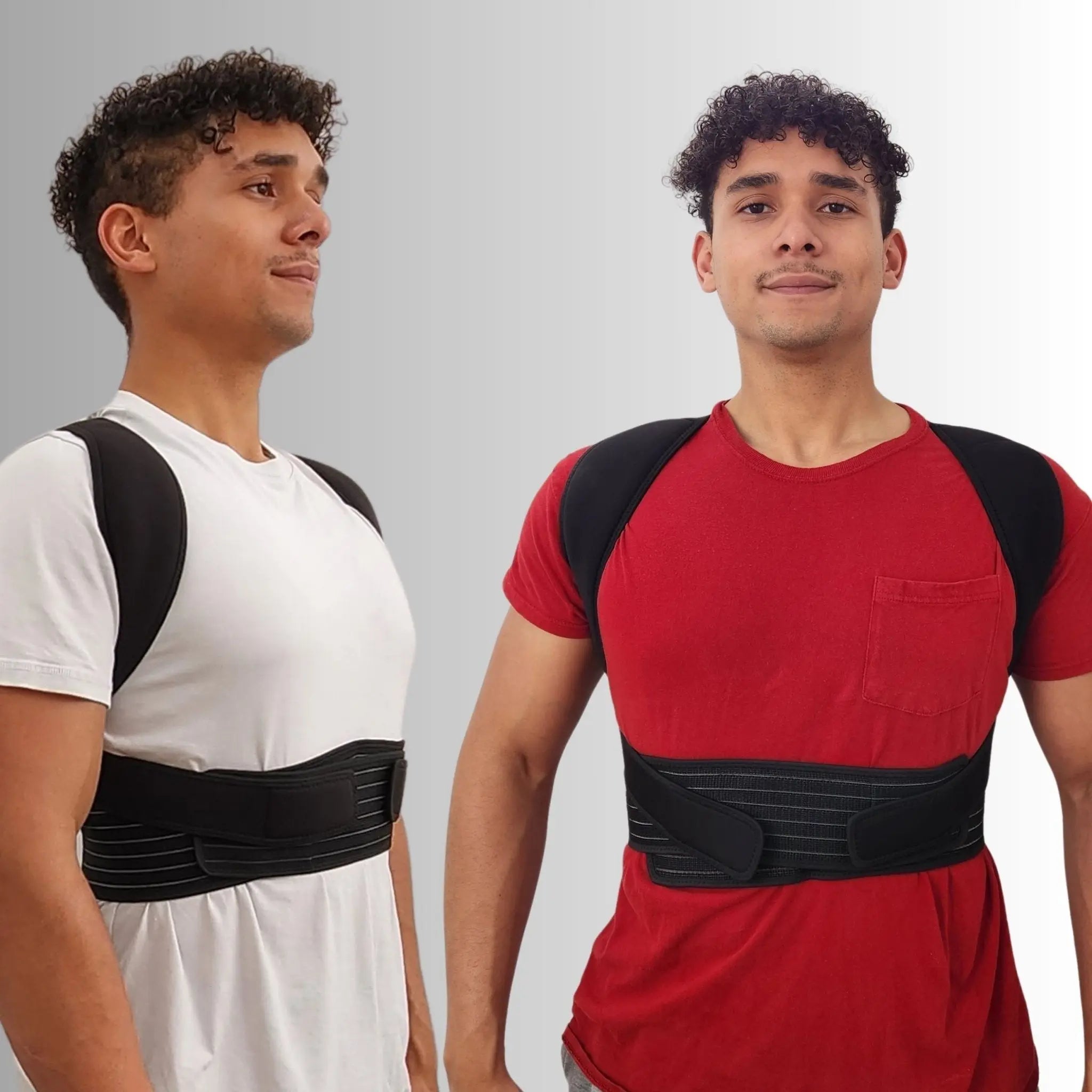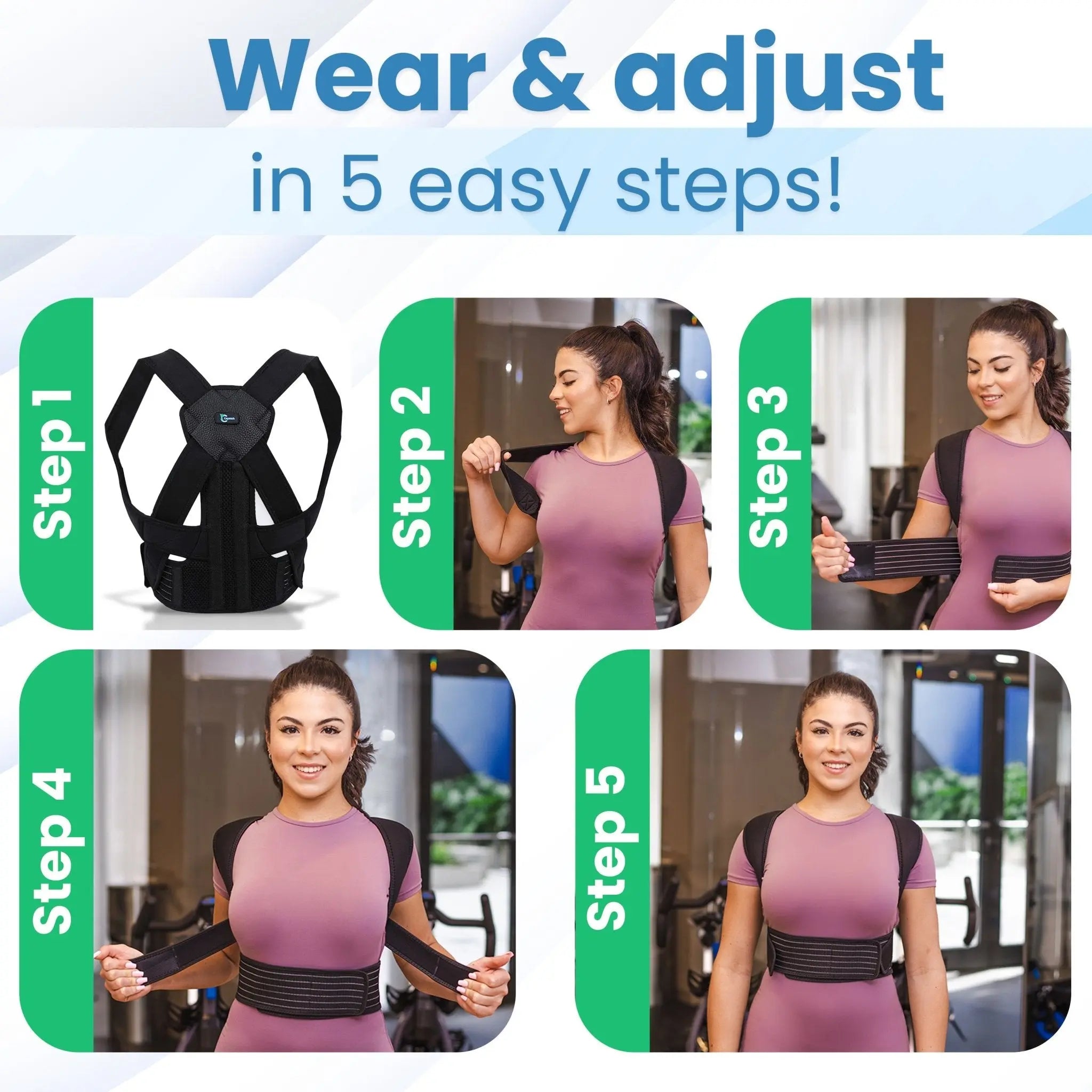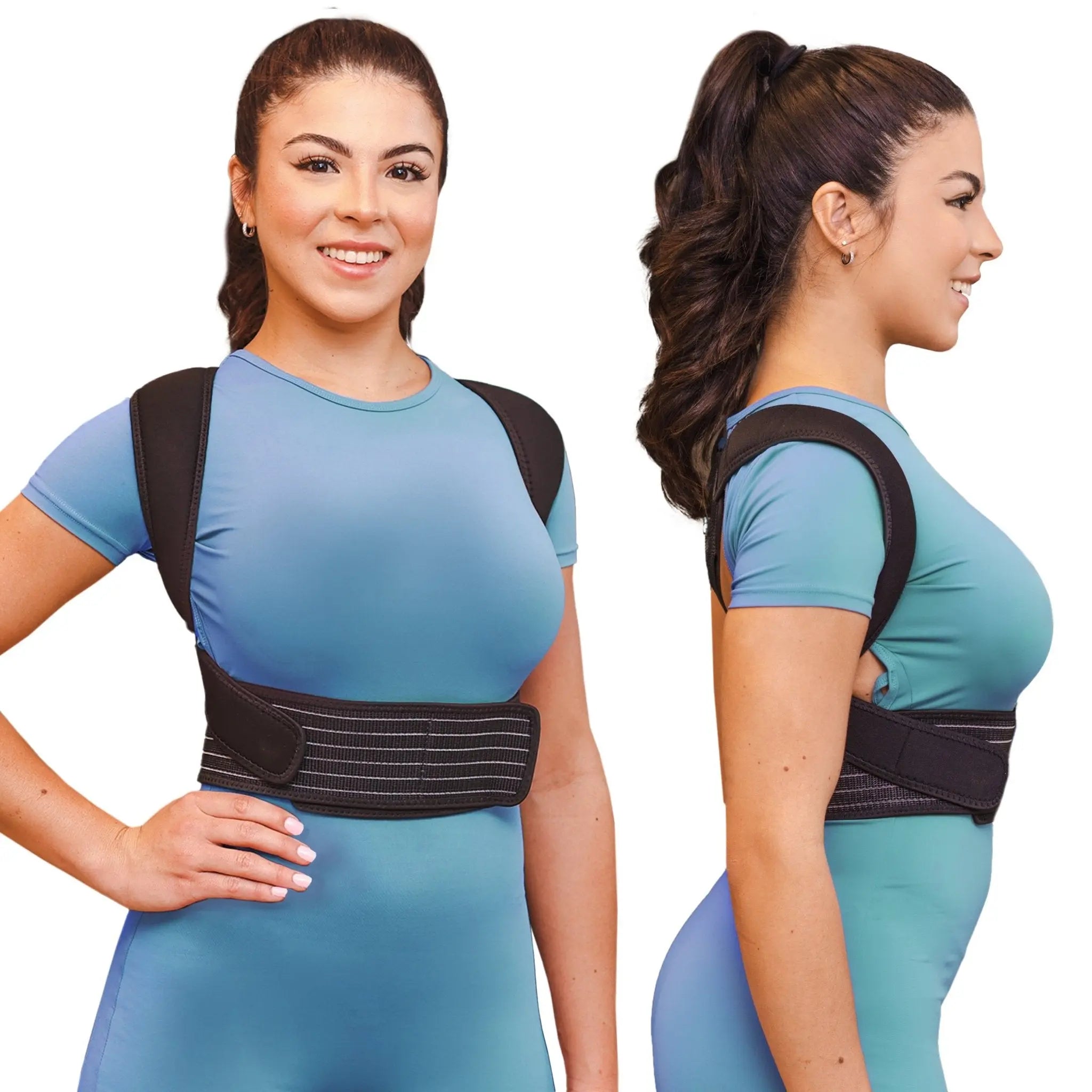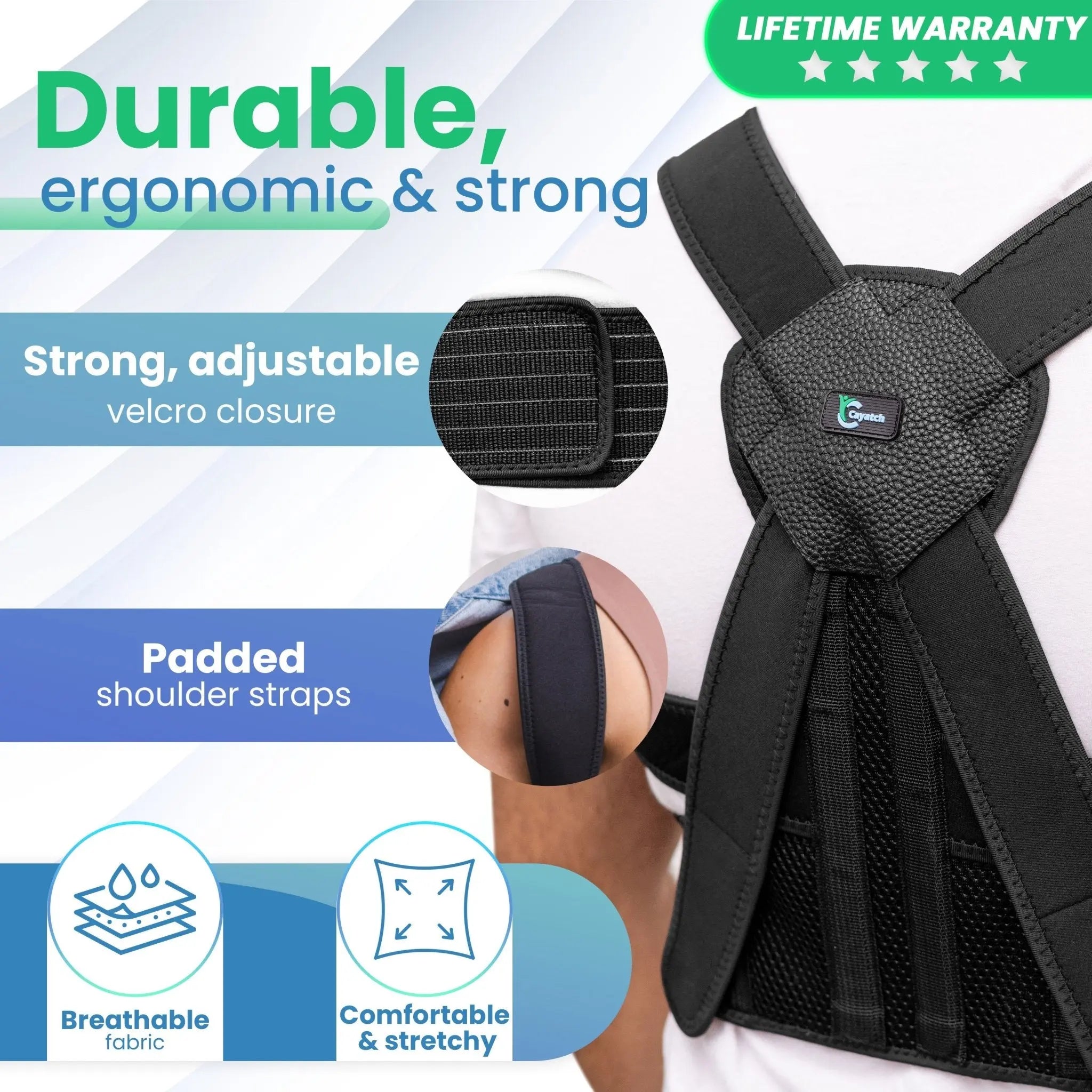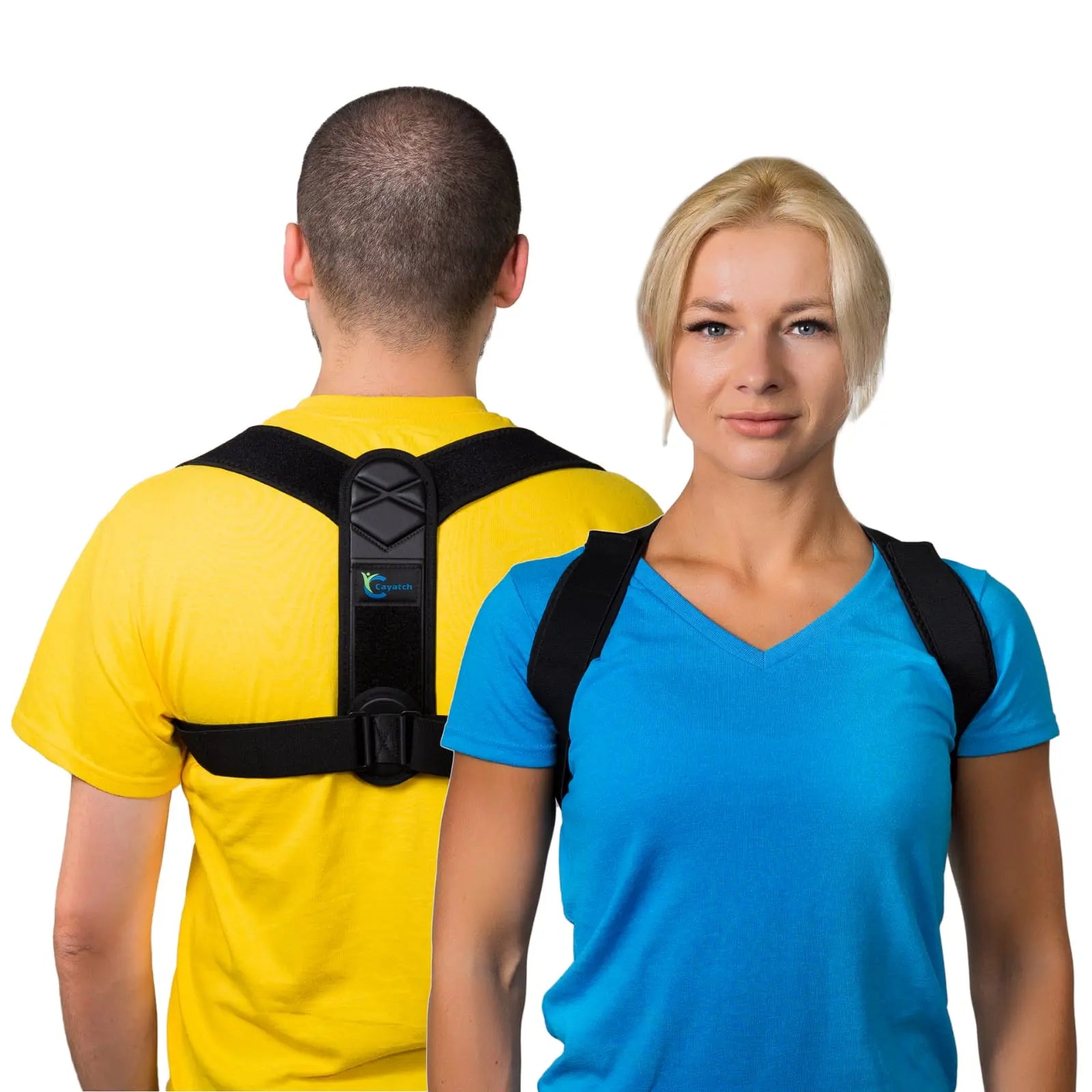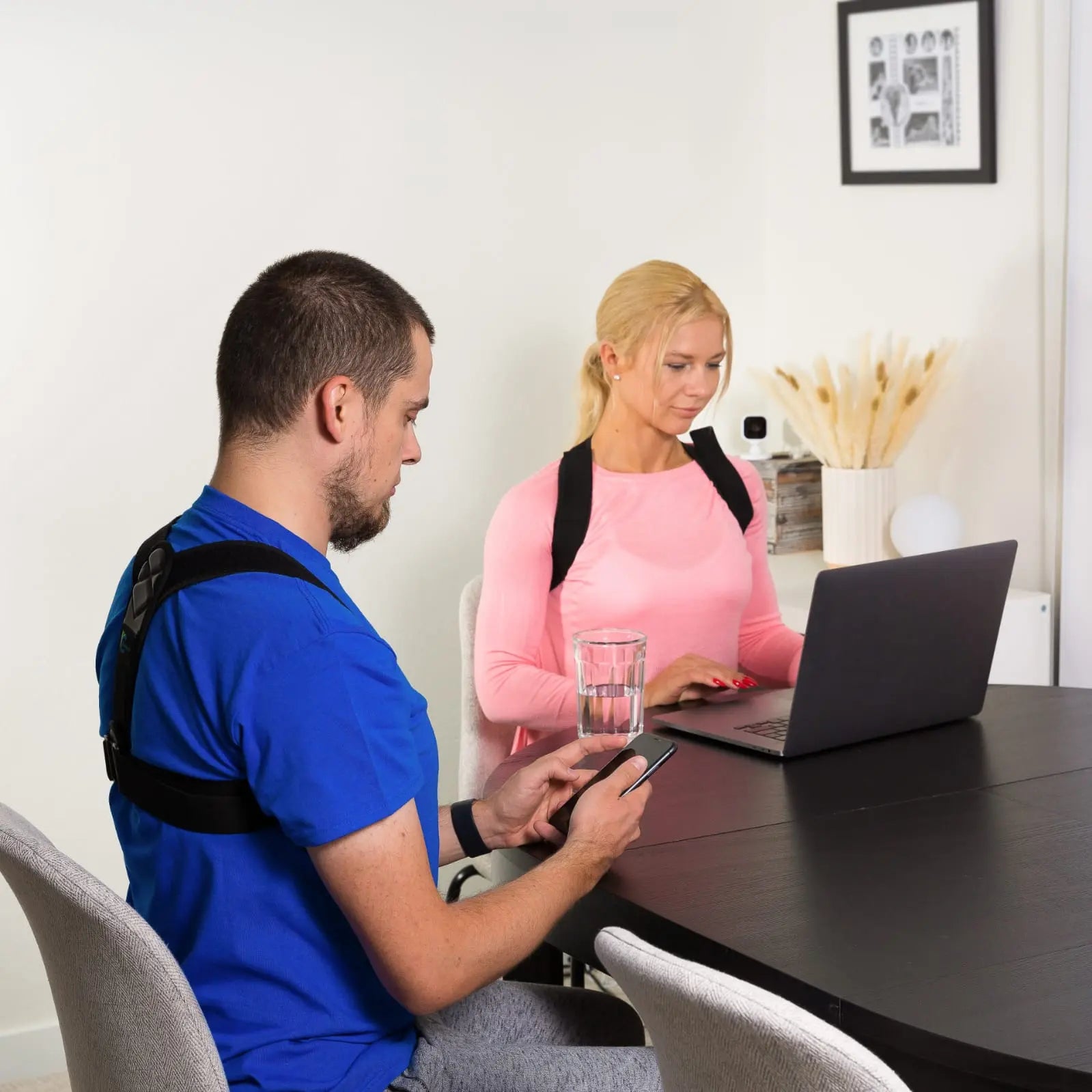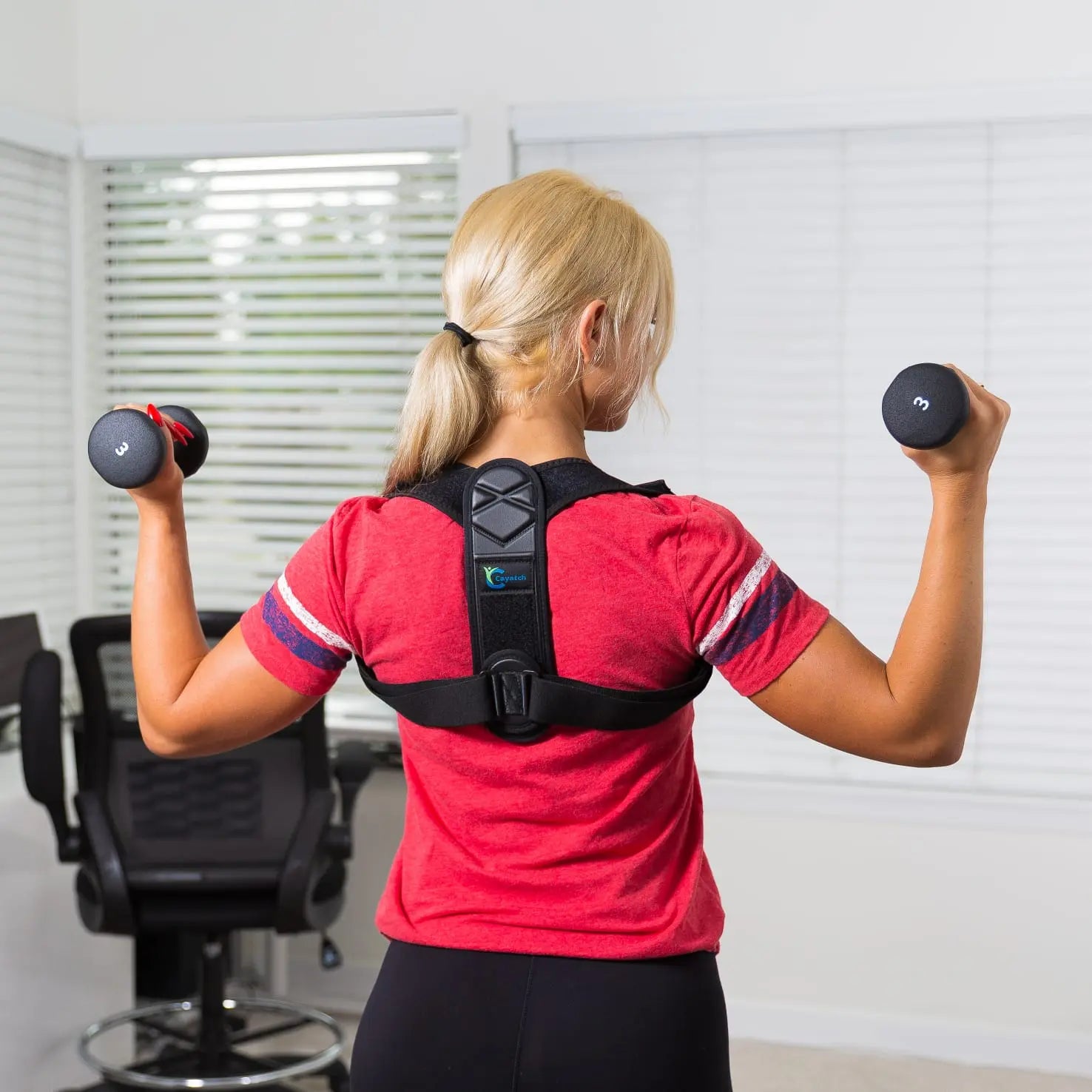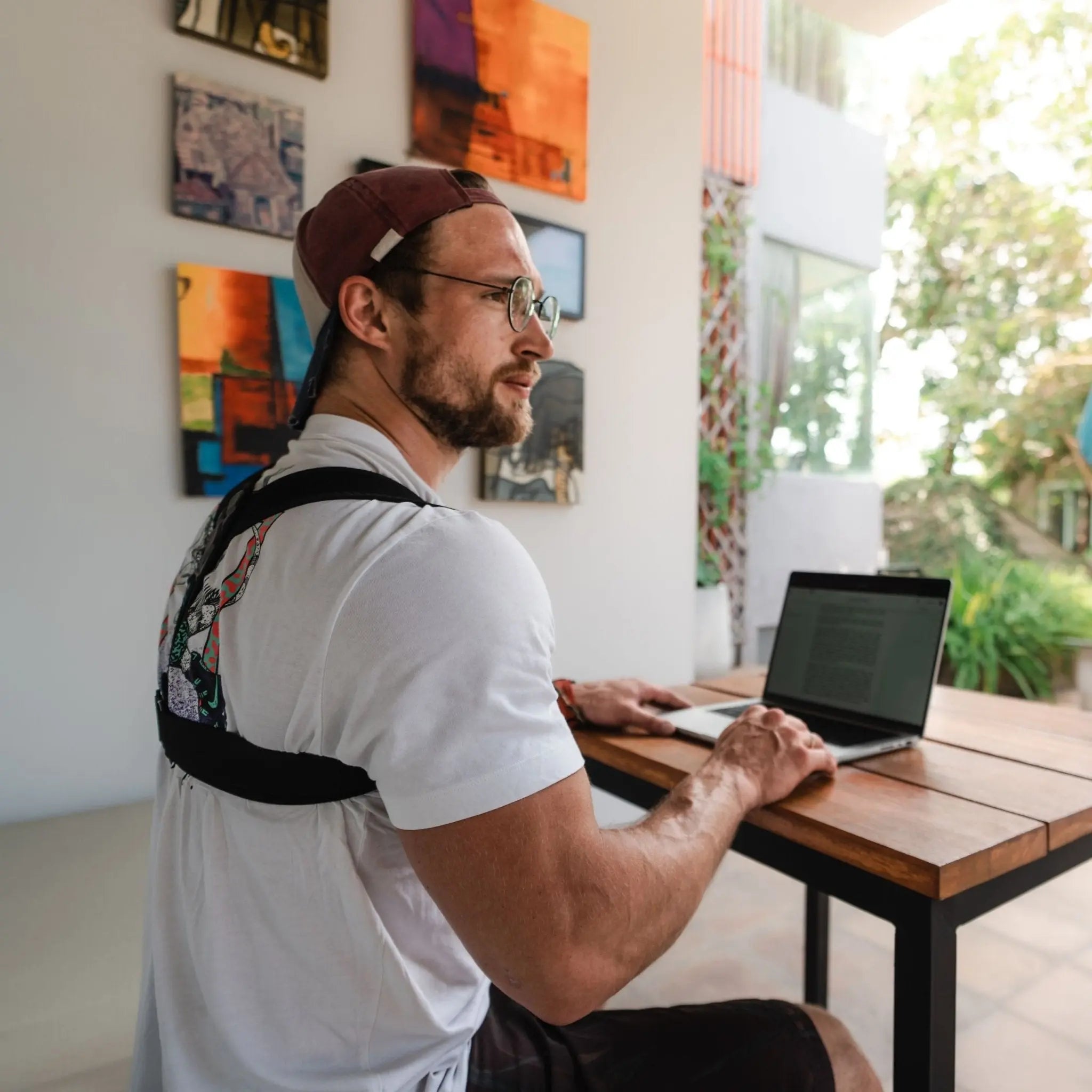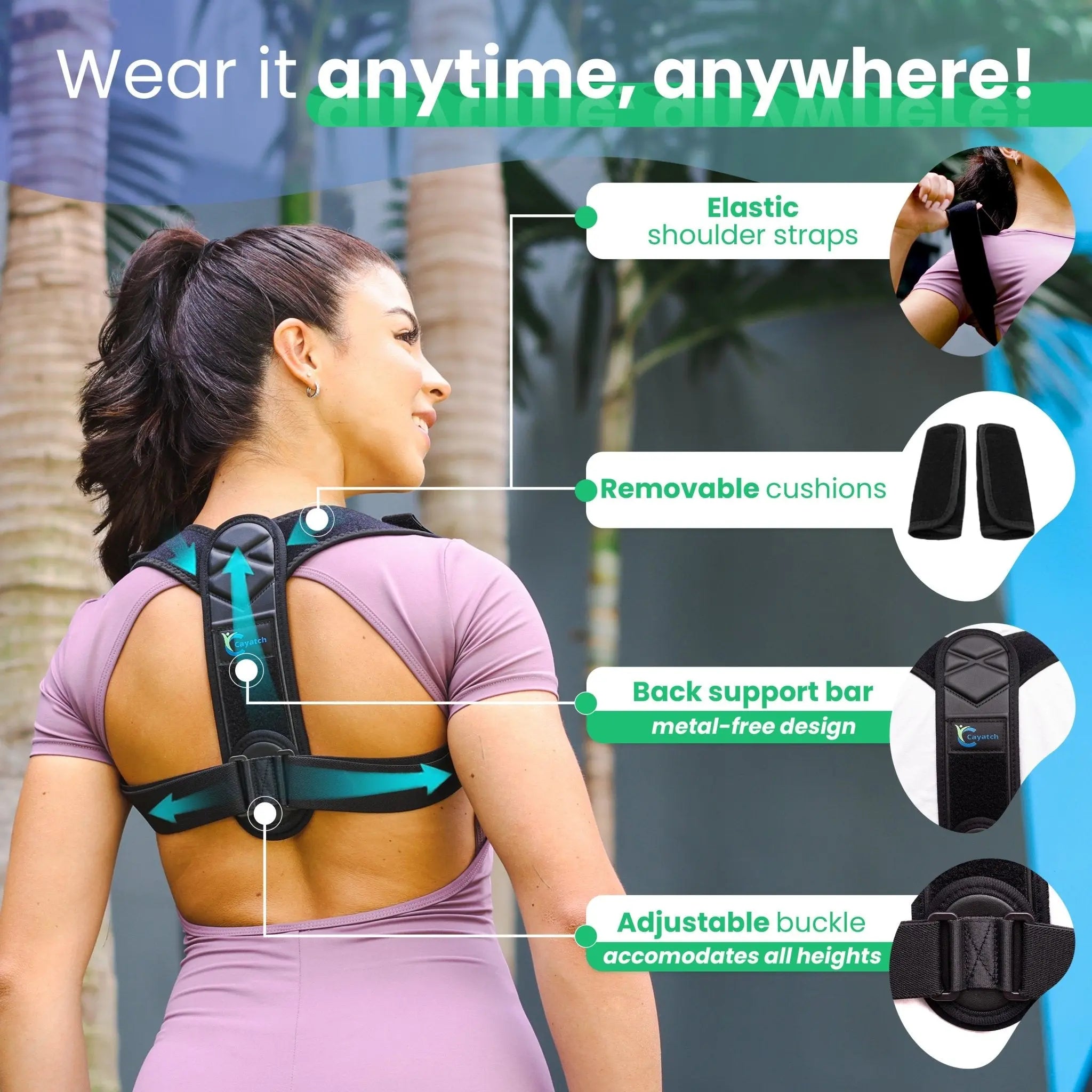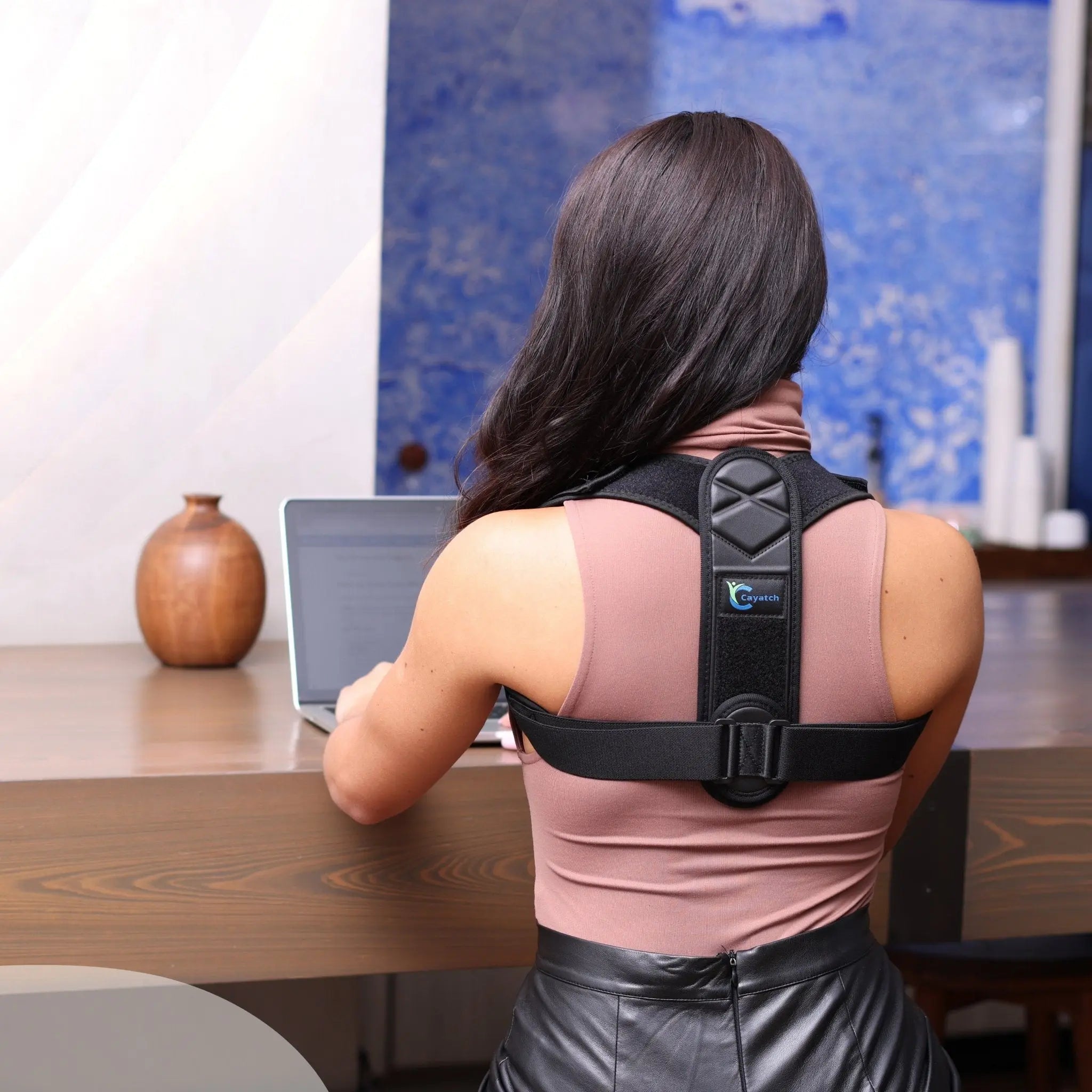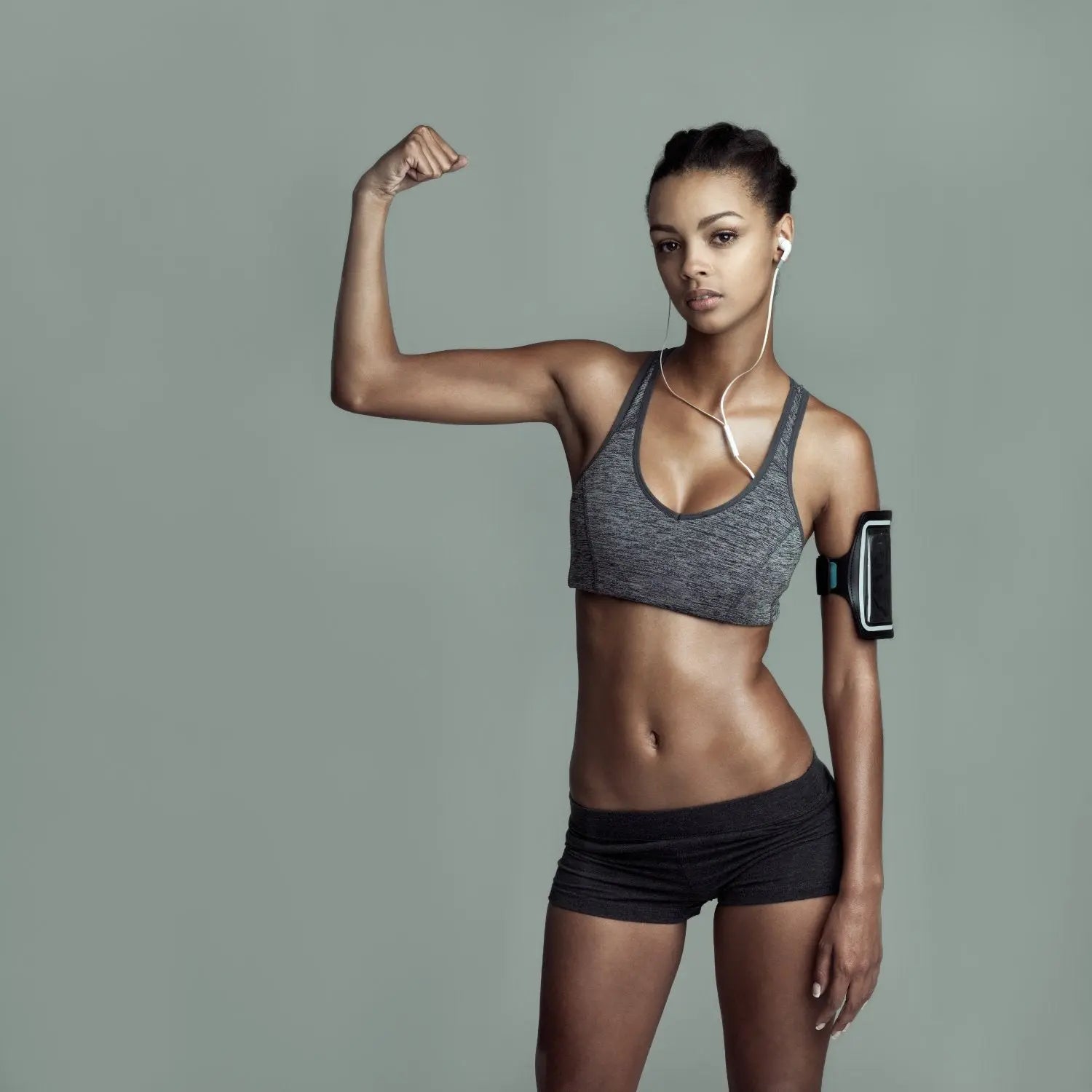How To Fix Duck Feet Posture? Learn From The Experts!

Duck feet posture refers to the abnormal outward pointing of the toes, resembling the stance of a duck. While commonly observed in children, who typically outgrow this posture around age 8, persistent or newly developed duck feet in adults raises concerns.
This misalignment can lead to serious complications such as back pain, ankle pain, and the development of flat feet, although it is possible to live many years with duck feet posture and not experience any of these symptoms. Factors such as a sedentary lifestyle, incorrect body posture, and lower extremity injuries can be the cause of duck feet and correcting this condition is imperative to a healthier life.
Determining whether you have duck feet posture is straightforward. Stand in a relaxed, upright position and observe the direction of your toes. If they point outward, you exhibit duck feet posture.
If you're dealing with duck feet, there's no need for alarm. Various strategies exist to correct this posture, mitigate its consequences, and enhance the stability and functionality of the lower limbs. This article delves deeper into the nature of duck feet, exploring its causes, implications, and corrective measures.
What are the Cause of Duck Feet Posture?
There are many different causes of duck feet. Persistent duck feet after the age of 8 may be a result of developmental abnormalities in the hip, knee, or ankle. However, new onset duck feet in an adult may be a result of poor posture, sedentary lifestyle, or injury to the lower extremities.
1. Sedentary Lifestyle: Extended periods of sitting and lack of physical activity can lead to weakened hip and leg muscles with corresponding tightness in opposing muscle groups. This imbalance contributes to the outward turning of the feet as the body seeks stability and compensation for the lack of strength and flexibility.
2. Improper Shoes: Footwear that lacks proper support or does not fit well can influence the alignment of the feet. Shoes with narrow toe boxes or insufficient arch support can lead to the development of duck feet posture by not accommodating the natural shape and posture of the feet and encouraging poor walking habits.
3. Injury or Trauma: Previous injuries such as fractures, sprains, or muscle damage in the legs, hips, or feet can lead to compensatory movement patterns. As the body tries to avoid pain or adjust to changes in structure or function, these patterns can solidify into duck feet.
4. Structural Anomalies: Some individuals have congenital conditions or develop structural changes over time that affect the alignment of their legs and hips. Conditions like hip dysplasia, variations in the shape of the femur, or differences in leg length can naturally lead to an outward foot position as the body seeks to maintain balance.
5. Poor Posture: Chronic poor posture, especially in the upper body and core, can influence lower body alignment. The body is a kinetic chain, and misalignment in one area can lead to compensatory adjustments elsewhere. Poor spinal alignment and core weakness can lead to alterations in how the legs and feet position themselves for stability and movement.
Why is Duck Feet Posture Worrisome?
Duck feet posture is worrisome for a few reasons, particularly because it can affect the alignment and functioning of the entire body. Although it is possible for people to go years without experiencing any of these symptoms, it will inevitably happen at some point.
1. Increased Stress on Joints: Duck feet posture can lead to abnormal stress on the ankles, knees, and hips. The misalignment can cause uneven distribution of weight, which may increase the risk of joint pain and osteoarthritis over time due to the abnormal forces exerted on these joints.
2. Muscle Imbalances and Weakness: This posture often results from and contributes to imbalances in muscle strength and flexibility around the hips, legs, and feet. Over time, these imbalances can lead to chronic pain, reduced mobility, and increased risk of injury.
3. Back Pain: The misalignment caused by duck feet can extend upward, affecting the alignment of the pelvis and spine. This can contribute to lower back pain and discomfort due to the altered posture and the additional strain placed on the lower back muscles to compensate for the misalignment.
4. Impact on Balance and Stability: Proper foot alignment plays a crucial role in balance and stability. Duck feet posture can impair balance, making it more difficult to maintain stability during everyday activities and increasing the risk of falls, especially in older adults.
5. Aesthetic Concerns: Some individuals may feel self-conscious about the appearance of their duck feet posture, which can affect their confidence and willingness to engage in certain activities or wear certain types of footwear.
7 Simple Exercises to Fix Duck Feet Posture
Addressing duck feet posture is crucial for maintaining proper posture and body alignment as duck feet posture can lead to pain in the knees, hips, and back. Below are seven exercises designed to enhance your posture and mitigate the effects of duck feet.
Exercise 1: Stretching the Calf Muscles
Instructions:
- Stand facing a wall at arm's length.
- Place both arms on the wall at shoulder height.
- Step one foot back while keeping the other forward, bending the front knee and keeping the back leg straight.
- Lean into the wall, feeling a stretch in the calf of the back leg.
- Hold for 20-30 seconds, then switch legs.
- Repeat several times.
Exercise 2: Strengthening the Hip Abductors
Instructions:
- Lie on your side with legs straight and stacked.
- Lift the top leg towards the ceiling while keeping it straight.
- Lower it without touching the bottom leg.
- Perform 10-15 repetitions, focusing on engaging the hip muscles.
- Switch sides and repeat.
Exercise 3: Enhancing Ankle Mobility
Instructions:
- Sit with legs extended.
- Rotate your ankles in circles, flexing and pointing your toes.
- Continue for 1-2 minutes per ankle.
- Use your hands for gentle guidance if needed.
Exercise 4: Strengthening the Quadriceps and Improving Balance
Instructions:
- Stand with feet hip-width apart.
- Lift one foot, balancing on the other.
- Hold for 30 seconds, ensuring hip, knee, and foot alignment.
- Switch legs and repeat.
Exercise 5: Tightening the Core
Instructions:
- Lie on your back with knees bent.
- Engage your core to lift your shoulders off the ground.
- Hold for 10-15 seconds.
- Relax, then repeat for 2-3 sets of 10-15 repetitions.
Exercise 6: Activating the Glutes
Instructions:
- Lie on your back with knees bent.
- Lift your hips while squeezing your glutes.
- Hold for 10-15 seconds, then lower.
- Perform 10-15 repetitions, focusing on engaging the glutes.
Exercise 7: Strengthening the Posterior Tibialis
Instructions:
- Sit with feet flat on the floor.
- Raise your heels, putting pressure on the toes.
- Hold for 5 seconds, then relax.
- Repeat for 2-3 sets of 10-15 repetitions, concentrating on the feet and ankle muscles.
You can also read: How flat feet affect your posture
Can a Chiropractor Help Fix Duck Feet Posture?
It is unlikely that a chiropractor can fix your duck feet posture with solely manipulation of the spine or legs, however, they may be able to fit you with custom orthotics or shoes that will help realign your feet. This over time can shift your feet back to a normal position which will help prevent further joint pain and degeneration.
A podiatrist or an orthopedist would also be able to help correct duck feet posture. If there is anything surgical that would be of benefit, these would be the doctors you would want to see. Physical therapists are great for providing and expounding on exercises that are beneficial in correcting duck feet.
Frequently Asked Questions (FAQs)
Can you straighten duck feet?
Yes, you can regain your natural feet position through exercise, proper footwear, and maintaining proper posture. This consistency over time will straighten duck feet.
How do I correct my duck feet?
Different types of exercises as described above can help correct duck feet as well as ensuring proper footwear and proper full body posture. A physical therapist, podiatrist, or a doctor is the best person to ask for help.
Is it OK to have duck feet?
No! Although you may have duck feet now with seemingly no symptoms, problems will inevitably arise at some point in your life. If you have duck feet, you must treat them properly.
Do duck feet affect running?
Yes, this will cause an exponentially increased amount of stress on the joints and ligaments of the feet, leading to further damage. However, the deviation of your feet can be cured over time with the right effort and determination.
Should my feet be straight when I walk?
Your feet should be straight ahead when you are walking or else there is an increased amount of stress on the joints and ligaments of the feet, leading to further damage.
Conclusion
Duck feet posture is an abnormal outward deviation of the toes, which resembles the stance of a duck. This condition, while often underestimated, has significant effects on health and mobility, however, correcting duck feet posture is achievable with dedication and the right approach.
Through targeted exercises and maintaining good posture, we can strengthen the lower body, improve alignment, and prevent complications like joint pain and muscle imbalances.
Lifestyle changes, including better footwear and active breaks from sitting, play a crucial role in managing duck feet. Consulting healthcare professionals such as physical therapists or podiatrists ensures personalized and effective treatment plans.
In essence, addressing duck feet posture offers a chance to enhance physical well-being. With informed actions and expert advice, correcting this condition leads to improved mobility and quality of life.




























